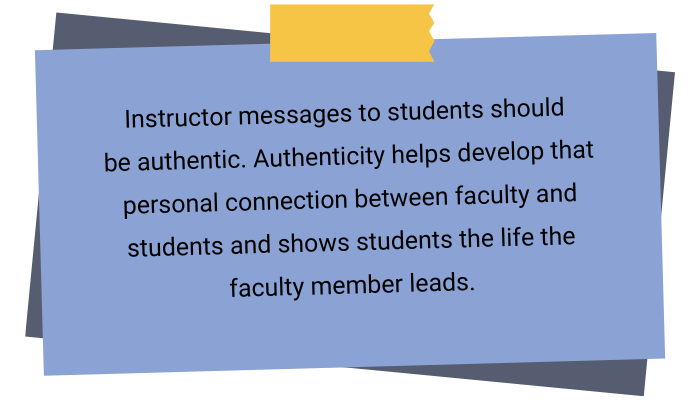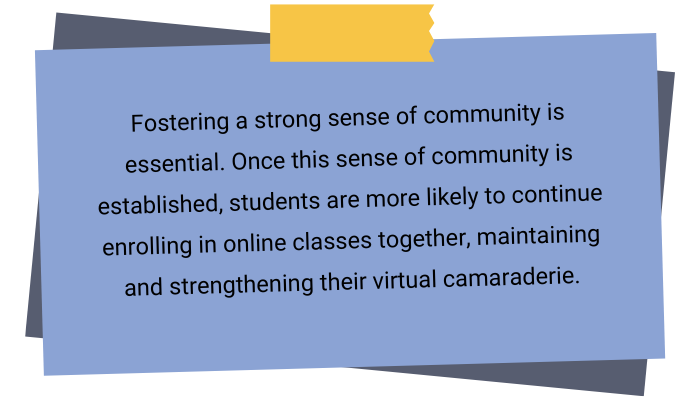Nurturing Success: Fostering a Caring Digital Learning Environment at HSIs
Published by: WCET | 7/19/2024
Tags: Digital Learning, Distance Education, Managing Digital Learning, Minority Serving Institution, Online Learning, Student Success
Published by: WCET | 7/19/2024
Tags: Digital Learning, Distance Education, Managing Digital Learning, Minority Serving Institution, Online Learning, Student Success
A few months ago, we were thrilled to welcome Barry Briggs, one of our interns at WCET and Every Learner Everywhere, as a guest author for a great post about Minority Serving Institutions. Today, we are excited to have Barry back on Frontiers to share his research on the impacts of quality digital learning. This work focuses on how Hispanic Serving Institutions create nurturing digital learning environments that enhance student success by showing care, honoring culture, and fostering a sense of community.
Barry has recently completed his internship with us, and we send him our best wishes for his future endeavors. Thank you once again, Barry!
Enjoy the read,
Lindsey Downs, WCET
In recent years, the shift to digital learning has brought numerous challenges and opportunities for educational institutions, particularly Hispanic-Serving Institutions (HSIs). While the transition to online education has enabled greater accessibility, it has also highlighted the need for a nurturing and caring environment that caters to the unique needs of Hispanic students. Now, more than ever, there is a call for education that caters to the culturally diverse audiences institutions aspire to reach. In education, there should be no one-size-fits-all.
Creating a nurturing and caring environment in digital learning is essential for several reasons:
Hispanic students often come from diverse cultural backgrounds which influences their educational experiences.
A more nurturing environment acknowledges and respects these cultural differences, promoting a sense of belonging. As a result, nurtured students are often more engaged and more likely to succeed. A caring environment that prioritizes student well-being and support fosters higher levels of engagement. Students who feel supported and valued are more likely to persist and succeed in their studies. This is particularly crucial for HSIs, where retention rates can be a significant concern.

As Michelle Pacansky-Brock argues, one of the most effective ways to create a nurturing environment is by humanizing online education. Instructors can achieve this by creating personal connections, such as using personalized video messages to introduce themselves, sharing their backgrounds, and expressing their commitment to student success. Dr. Luke Dowden, Chief Online Learning Officer at Alamo Colleges, advises these messages should be authentic. Authenticity helps develop that personal connection between faculty and students and shows students the life the faculty member leads.
For example, in recorded or live videos, allow pets and children to be heard in the background. I agree that the more authentic a professor is in the digital space, the more relatable they are to their distance-learning students. Professors should be accessible by maintaining regular virtual office hours and encouraging students to reach out with questions or concerns can make a significant difference. Sharing personal stories that relate course content to real-life experiences, including the instructor’s own, helps students see the relevance of their studies and builds a personal connection.
Culturally responsive teaching acknowledges and incorporates students’ cultural references in all aspects of learning. It creates an ecosystem of care and respect for the different cultures blended within the classroom. Instructors can enhance the course by integrating diverse content, such as perspectives and examples that reflect the experiences of Hispanic communities. Place value on students’ experiences by creating assignments that encourage them to learn more about their cultural backgrounds This helps bridge the gap between the world of education and everyday life experiences. It is time that we move past just celebrating cultural heritage by recognizing and celebrating cultural events, days, and traditions relevant to Hispanic students. Although this acknowledgment fosters a sense of pride and belonging, it mitigates the importance of these students to just certain holidays rather than creating a space at the table for their culture in its totality. Traditional celebrations have the potential to “othering” Hispanic students, further making them feel like they don’t belong in online higher educational learning when it is the only aspect of culture that is celebrated.

Creating a sense of community in a digital space can be challenging, but it is crucial for a nurturing environment. Implementing peer mentoring programs provides students with guidance and support from their peers, which helps new students navigate the challenges of digital learning. Facilitating the formation of virtual study groups where students can collaborate, share resources, and support each other academically fosters a sense of community. Dr. Jory Hadsell, Vice Chancellor of Foothill-De Anza Community College District, relates that he has seen some students who would often take online classes together so that they could keep the virtual comradery going for as long as possible.
Building on this foundation of community, access to support services is vital for student success in digital learning. Institutions should ensure that online Hispanic learners can access academic advising by offering virtual academic advising sessions to help them plan their courses and address any academic challenges. Institutions should also provide access to virtual counseling services and mental health resources to support students’ emotional and mental health, guaranteeing that all learners have access to reliable emotional support. This is another way to foster that sense of belonging and care students need to persevere in their programs.
To further enhance this nurturing environment, continuous improvement is essential. Solicit regular feedback from online Hispanic learners to understand their needs and make necessary adjustments. This can be achieved through surveys, one-on-one Zoom calls, and questionnaires to gather feedback on the effectiveness of teaching methods, course content, and support services.

Encouraging students to share their concerns and suggestions through open communication channels, such as virtual office hours or anonymous suggestion boxes, helps maintain open lines of communication. Acting on the feedback received to make tangible improvements in the learning environment demonstrates a commitment to online Hispanic students’ success.
Fostering a nurturing and caring environment for digital learning at Hispanic-Serving Institutions is crucial for the success and well-being of Hispanic students. By humanizing online education, embracing culturally responsive teaching, building a strong virtual community, providing comprehensive support services, and continuously seeking feedback, educators can create an environment where all students feel valued, supported, and empowered to succeed. As we continue to navigate the evolving landscape of digital learning, these strategies will help HSIs effectively serve their student community.
Post authored by Barry Briggs, WCET Intern